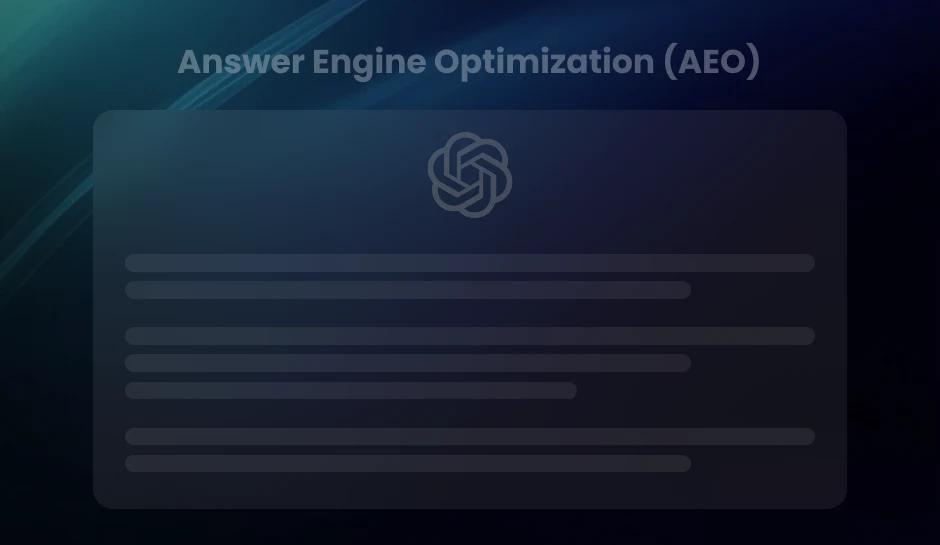
AI-Powered Insights in Adobe Analytics for Smarter Marketing Strategies
Manually analyzing marketing data can be time-consuming and inefficient. AI-powered insights in Adobe Analytics simplify this process by identifying trends, detecting anomalies, and delivering real-time recommendations. Businesses using AI can make data-driven decisions faster, refine campaigns, and stay ahead of market shifts.
Marketing teams handle vast amounts of data daily, yet extracting meaningful insights remains a challenge. Adobe Analytics is a powerful tool, but manual data analysis can be time-consuming and prone to human error. This is where AI-powered insights in Adobe Analytics transform how businesses approach marketing strategies.
Artificial intelligence enhances data interpretation, automates trend analysis, and provides actionable recommendations. It enables marketers to optimize campaigns, refine customer targeting, and improve decision-making with real-time analytics. By integrating AI, brands can shift from reactive to proactive marketing, ensuring higher engagement and conversion rates.
This blog explores how AI-powered insights in Adobe Analytics improve marketing strategies, streamline decision-making, and help brands stay ahead of industry trends.
Adobe Analytics and AI Capabilities: A Comprehensive Overview
What is Adobe Analytics?
Adobe Analytics is a powerful platform designed to collect, process, and interpret large volumes of digital data. Businesses use it to track user behavior across websites, mobile apps, and other digital channels. The platform delivers real-time insights, enabling data-driven decision-making at scale.
With advanced segmentation, customer journey mapping, and cross-channel data integration, Adobe Analytics transforms raw data into actionable intelligence. Organizations leverage its capabilities to optimize marketing strategies, improve customer experiences, and increase conversion rates.
Understanding AI-Powered Insights in Adobe Analytics
AI-powered insights in Adobe Analytics refer to the use of artificial intelligence to analyze large datasets, identify patterns, and generate actionable recommendations. Instead of relying solely on traditional data analysis methods, AI enhances the ability to detect trends, forecast customer behavior, and optimize marketing strategies in real time.
Adobe Analytics leverages Adobe Sensei, an AI and machine learning framework designed to automate complex data analysis. Adobe Sensei processes vast amounts of marketing data, offering insights that would take human analysts hours or even days to uncover.
How AI Automates Data Analysis in Adobe Analytics
- Pattern Detection: AI identifies recurring trends in customer behavior, purchase cycles, and engagement rates, helping marketers refine their targeting strategies.
- Trend Forecasting: AI-powered insights predict future customer actions based on historical data, enabling businesses to optimize marketing campaigns before trends fully emerge.
- Anomaly Detection: AI recognizes sudden changes in website traffic, sales, or customer engagement, alerting teams to potential issues or opportunities for improvement.
The Need for AI-Powered Insights in Marketing Strategies
Marketing has become increasingly data-driven, yet many businesses struggle to extract meaningful insights from the vast amount of information available. Traditional analytics methods require manual intervention, which is time-consuming and often leads to missed opportunities. AI-powered insights in Adobe Analytics solve this challenge by automating data analysis, identifying trends, and offering real-time, actionable recommendations.
Challenge 1: Overwhelming Data Without Actionable Insights
Marketing teams collect data from multiple sources, including website interactions, social media engagement, email campaigns, and customer purchases. While this data holds valuable insights, manually processing it is inefficient and prone to human error.
AI in Adobe Analytics automates this process by sifting through massive datasets, recognizing key patterns, and highlighting the most critical trends. Instead of relying on analysts to spot connections, AI quickly identifies correlations and anomalies, ensuring that marketing teams act on the most relevant data.
Challenge 2: Inefficient Customer Targeting and Personalization
Traditional segmentation methods rely on static demographic data, making it difficult for marketers to adapt to evolving customer preferences. Without real-time insights, businesses risk delivering generic messages that fail to engage their audience.
AI-powered insights in Adobe Analytics solve this problem by dynamically analyzing user behavior, purchase history, and engagement patterns. This allows businesses to create highly personalized marketing campaigns tailored to individual customers, increasing the likelihood of conversions and long-term loyalty.
Challenge 3: Delayed Decision-Making Due to Slow Data Processing
Marketing success depends on the ability to react quickly to changing consumer behaviors and market conditions. However, standard analytics tools often require manual interpretation, leading to delays in campaign optimization.
AI-driven insights in Adobe Analytics process data in real time, providing instant feedback on campaign performance. Marketers can adjust their strategies on the fly, optimizing ad spend, refining messaging, and improving engagement rates without waiting for lengthy analysis.
Challenge 4: Identifying Anomalies and Market Shifts in Advance
Sudden changes in website traffic, conversion rates, or customer engagement can indicate emerging trends or potential issues. However, these anomalies often go unnoticed until they significantly impact revenue.
AI-powered insights in Adobe Analytics automatically detect and flag unusual patterns, alerting marketers before problems escalate. This proactive approach enables businesses to capitalize on new opportunities, refine their marketing strategies, and prevent revenue loss due to unforeseen disruptions.
How AI-Powered Insights in Adobe Analytics Improve Marketing Strategies
Analyzing vast amounts of marketing data and extracting meaningful insights is critical for business growth. However, traditional analytics methods often require extensive manual effort and fail to deliver real-time recommendations. AI-powered insights in Adobe Analytics address these challenges by automating data analysis, identifying hidden patterns, and predicting future trends. This allows businesses to make data-driven decisions, optimize marketing campaigns, and improve customer engagement with precision.
Hyper-Personalization and Audience Targeting
Generic marketing campaigns often struggle to capture consumer interest, as they do not cater to individual preferences. AI-powered insights in Adobe Analytics refine audience segmentation by analyzing real-time customer behavior, interaction history, and engagement metrics. Instead of relying on broad demographic data, AI continuously updates audience profiles based on evolving preferences, ensuring hyper-personalized targeting.
For example, an eCommerce brand using Adobe Analytics can leverage AI to track browsing habits, purchase history, and abandoned cart patterns. AI then generates personalized product recommendations, promotional offers, and content tailored to each user. This level of personalization not only increases engagement rates but also enhances customer retention and lifetime value.
Predictive Analytics for Campaign Optimization
Marketers often rely on historical data to plan campaigns, but this approach does not always account for emerging trends or changing consumer behavior. AI-powered insights in Adobe Analytics enhance campaign optimization by predicting customer actions before they happen.
AI analyzes past engagement patterns and identifies which customer segments will most likely respond to a particular campaign. It can also determine the best-performing content formats, email subject lines, ad placements, and timing for maximum impact. This predictive capability enables businesses to adjust their messaging, allocate budgets more effectively, and focus on high-converting audiences.
For instance, a travel company can use AI to forecast peak booking times based on past travel trends, search behaviors, and external factors like seasonal demand. With these insights, they can launch targeted promotions immediately, increasing conversion rates and revenue.
Automated Anomaly Detection and Trend Forecasting
Market trends and customer behaviors can change rapidly, making it difficult for businesses to react in real-time. AI-powered insights in Adobe Analytics continuously monitor data streams, detecting unusual patterns and highlighting opportunities or risks before they become significant.
For example, if an online retailer notices a sudden surge in traffic from a particular region, AI can determine whether it is due to a viral social media post, influencer promotion, or competitor activity. Instead of reacting after the fact, businesses can proactively adjust their strategy, such as increasing ad spend in that region or launching localized campaigns, to capitalize on the trend.
Additionally, AI identifies negative anomalies, such as sudden drops in conversion rates, engagement, or website traffic. If a campaign underperforms, AI can pinpoint the potential reasons, such as ineffective ad creatives, poor landing page experiences, or external disruptions like algorithm changes. This allows marketers to make timely adjustments before revenue losses occur.
Enhanced Customer Journey Mapping and Funnel Optimization
Understanding the complete customer journey is essential for optimizing marketing performance. AI-powered insights in Adobe Analytics analyze multi-channel interactions, mapping how customers navigate different touchpoints before converting.
For example, AI can track a user’s journey from clicking on a Facebook ad to visiting a website, signing up for a newsletter, interacting with emails, and purchasing. Businesses can analyze this data to identify friction points in the conversion funnel and optimize their strategy accordingly.
If AI detects many users drop off after reaching a pricing page, marketers can conduct A/B tests on pricing strategies, introduce limited-time offers, or improve messaging clarity. If customers frequently abandon carts, AI can suggest implementing automated reminders, personalized discount codes, or chat-based assistance to improve conversion rates.
Real-Time Insights for Agile Decision-Making
One of the biggest advantages of AI-powered insights in Adobe Analytics is the ability to interpret real-time data. Traditional analytics methods require manual reporting, which often delays decision-making. AI eliminates this lag by continuously analyzing live data and providing instant recommendations.
For example, during a flash sale event, AI can track customer responses in real-time, identifying which products are selling fastest and which ads are driving the most engagement. Based on these insights, businesses can immediately shift ad spend, adjust inventory, and modify promotions to maximize revenue before the sale ends.
Pro Tip- To maximize the benefits of AI-powered insights in Adobe Analytics, businesses should integrate AI-driven insights across all marketing channels. From email automation and paid media to website optimization and customer service chatbots, leveraging AI consistently ensures a seamless and highly personalized customer experience. Additionally, businesses should continuously test AI-generated recommendations, refine strategies, and align data-driven insights with long-term business objectives.
How to Get Started with AI-Powered Insights in Adobe Analytics
Integrating AI-powered insights in Adobe Analytics enables businesses to automate data analysis, predict trends, and optimize marketing strategies with precision. However, successful implementation requires a structured approach. Follow these key steps to ensure seamless adoption and maximize AI-driven decision-making.
Step 1: Enable AI-Driven Features in Adobe Analytics
Adobe Sensei, the AI engine within Adobe Analytics, powers features such as predictive analytics, anomaly detection, and automated attribution modeling. To activate these capabilities:
- Access AI Features: Navigate to Adobe Analytics settings and enable AI-driven tools, including automated alerts and trend forecasting.
- Connect Data Sources: Ensure customer interactions, campaign performance metrics, and behavioral data are fully integrated. AI relies on comprehensive data to generate meaningful insights.
- Customize AI Models: Configure machine learning algorithms based on business objectives, such as improving customer segmentation, detecting churn risks, or predicting high-converting audiences.
Step 2: Integrate AI with Existing Marketing Tools
AI-driven insights become more effective when connected to a company’s broader marketing ecosystem. To maximize AI’s potential:
- Synchronize with Advertising Platforms: Integrate Adobe Analytics with Google Ads, Facebook Ads, and LinkedIn Ads to optimize audience targeting and budget allocation. AI can predict which ad creatives and placements yield the highest ROI.
- Enhance CRM and Sales Platforms: Connect AI insights with CRM tools like Salesforce and HubSpot to refine lead scoring and automate personalized outreach based on predictive behavior analysis.
- Improve Email and Content Strategies: AI-powered insights help tailor email marketing and content recommendations by identifying high-performing topics, engagement patterns, and customer preferences.
Step 3: Train Teams on AI-Generated Insights
AI delivers valuable analytics, but teams must know how to interpret and act on them effectively. To ensure seamless adoption:
- Educate Teams on AI Dashboards: Train marketers, data analysts, and decision-makers on extracting key insights from AI-powered reports. Understanding predictive metrics, anomaly flags, and trend patterns is essential.
- Implement AI-Driven Decision Frameworks: Establish workflows that allow teams to act on AI recommendations in real-time, whether by adjusting ad spend, personalizing offers, or refining content strategies.
- Monitor AI Bias and Accuracy: Ensure AI models are regularly audited for accuracy and relevance. AI predictions should be continuously tested against actual performance data to prevent misguided marketing decisions.
Step 4: Continuously Optimize AI-Driven Strategies
AI insights are dynamic and must be continuously monitored and refined to maintain relevance. Businesses should:
- Regularly Analyze AI Predictions: Compare AI-generated forecasts with real-time outcomes to ensure accuracy and effectiveness. Adjust models if discrepancies arise.
- A/B Test AI-Driven Recommendations: Validate AI’s suggestions by experimenting with different customer segments, messaging styles, and ad creatives. Use performance metrics to refine strategies.
- Adapt to Market Trends in Real Time: AI-powered insights allow businesses to pivot quickly in response to shifting consumer behaviors, emerging trends, and external factors such as economic changes or competitor actions.
Key Takeaways
- AI-powered insights in Adobe Analytics automate data analysis, providing real-time recommendations for optimizing marketing strategies.
- Predictive analytics improve customer targeting by forecasting future behaviors and trends, leading to higher engagement and conversions.
- Automated anomaly detection helps businesses identify sudden market shifts and performance issues before they impact revenue.
- AI enhances audience segmentation, enabling hyper-personalized marketing campaigns tailored to individual customer preferences.
- Real-time insights empower agile decision-making, allowing businesses to adjust campaigns instantly for maximum ROI.
Conclusion
AI-powered insights in Adobe Analytics transform how businesses approach marketing by automating data analysis, predicting customer behavior, and enhancing personalization. Traditional analytics methods often require manual effort and delayed decision-making, whereas AI streamlines the process and ensures real-time optimization.
Businesses can stay ahead of market trends and improve customer engagement by integrating AI with existing marketing tools, training teams on AI-driven insights, and continuously refining data strategies. Embracing AI is no longer optional; it is essential for brands looking to maximize efficiency and drive measurable results.
Elevate Your Marketing With Ai Insights—Start Now!
Start leveraging AI-powered insights in Adobe Analytics to elevate your marketing strategies. For expert guidance on implementation and optimization, contact us at info@diggrowth.com
Ready to get started?
Increase your marketing ROI by 30% with custom dashboards & reports that present a clear picture of marketing effectiveness
Start Free Trial
Experience Premium Marketing Analytics At Budget-Friendly Pricing.

Learn how you can accurately measure return on marketing investment.
Additional Resources
Don’t Let AI Break Your Brand: What Every CMO Should Know
AI isn’t just another marketing tool. It’s changing...
Read full post postFrom Demos to Deployment: Why MCP Is the Foundation of Agentic AI
A quiet revolution is unfolding in AI. And...
Read full post postAnswer Engine Optimization (AEO): The New Frontier of SEO in 2025
As digital experiences continue to evolve, so does...
Read full post postFAQ's
AI automates data processing, identifies patterns, and provides predictive insights in real time, while traditional analytics requires manual interpretation. This allows businesses to react faster, optimize strategies efficiently, and uncover hidden trends that might otherwise go unnoticed.
Yes, AI enhances A/B testing by quickly analyzing results, identifying winning variations, and predicting which elements—such as headlines, images, or CTAs—will drive the highest engagement. This accelerates decision-making and ensures more effective campaign optimizations.
Absolutely. AI-powered insights help small businesses automate data analysis, optimize marketing budgets, and improve targeting precision. Even with limited resources, AI allows for smarter decision-making, reducing manual workload and maximizing ROI on marketing efforts.
AI follows strict data security protocols and complies with privacy regulations like GDPR and CCPA. Adobe Analytics ensures that AI-driven insights use anonymized, aggregated data, protecting individual user information while delivering accurate and actionable marketing insights.
Challenges include data integration issues, the need for continuous monitoring, potential AI bias, and a learning curve for teams unfamiliar with AI-driven insights. However, these obstacles can be effectively managed with proper training and strategy alignment.
 Shahzad Mussawir
Shahzad Mussawir  Rahul Sachdeva
Rahul Sachdeva 

